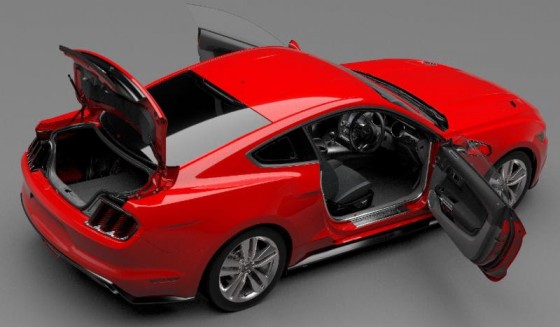The theme of “Work and Play,Technology that Improves Daily Lives” pushes the boundaries from what graphics do today to what they can do soon.
The latest research into interactive graphics applications will take the center stage at this year’s Emerging Technologies program at Siggraph 2015. The projects in the 2015 program fall under the theme “Work and Play,Technology that Improves Daily Lives.” Each project and installation exhibits how innovation can improve work environments, make everyday tasks easier, or help make leisure time more enjoyable. The Emerging Technologies presentation is an annual part of Siggraph, this year in Los Angeles August 9-13.
“As technology builds upon itself and becomes cheaper and wider spread, it’s important to see the beginnings of how it was developed,” said Kristy Pron,Siggraph 2015 Emerging Technologies Program Chair. “For this year’s conference, we wanted to find technologies that can be applied to daily life, whether it will be tomorrow or in a few years, but can be applicable regardless. It’s exciting to see first-hand a technology that you can follow the development of and know that it will be relevant to you in the near future.”
Presentations in this year’s Emerging Technologies program include:
Ford Immersive Vehicle Environment
Presented by Ford Motor Company
The Ford Immersive Vehicle Environment (FiVE) is a highly realistic immersive virtual reality system that addresses the unique challenges of automotive design, engineering and ergonomics. FiVE enables a collaborative approach that allows its program teams to see and understand complex engineering issues from any customer’s perspective; while, considering aesthetic design, fit and finish, manufacturability and maintenance of a vehicle’s system.

Christie Digital Sandbox
Presented by Christie Digital
Christie Digital’s latest technology expands the capabilities of today’s automatic projection-calibration systems. This demonstration demonstrates seamless calibration of a projection-mapped display automatically on any surface, smooth or complex, and even 3D. Christie Digital’s Sandbox presents an automatic alignment of a projection display in less than 30 seconds, even after the projector and/or surface is moved.
Semantic Paint: Interactive Segmentation and Learning of 3D Worlds
Presented by Stanford University, Nankai University, University of Oxford and Microsoft Research
This installation is a real-time, interactive system for geometric reconstruction and object class segmentation of 3D worlds. With this system, a user can walk into a room wearing a consumer-depth camera and a virtual reality headset, and reconstruct the 3D scene and interactively segment it into object classes. The user physically interacts with the scene in the real world, touching objects and using voice commands to assign appropriate labels to these objects.

An Auto-Multiscopic Projector Array for Interactive Digital Humans
Presented by Linköping University and the University of Southern California
With this installation, users interact with life-size 3D digital human subjects displayed via a dense array of 216 video projectors to generate images with high angular density over a wide field of view. As users move around the display, their eyes transition from one view to the next, making it ideal for displaying life-size subjects and it allows for natural personal interactions with 3D cues, such as eye-gaze and spatial hand gestures. Automultiscopic 3D displays allow a large number of people to experience 3D content simultaneously without the need for special glasses or headgear.
MidAir Touch Display
Presented by Keio University and University of Tokyo
The MidAir Touch Display integrates technology for tactile feedback, acoustic energy distribution, planer phased arrays, ultrasonic fields and aerial images through the Aerial Imaging Plate to provide visuo-tactile interaction with bare hands. This project enables users to see and touch virtually floating objects with the naked eye and their hands for true interaction.

A video preview of the Emerging Technologies program is embedded below.





